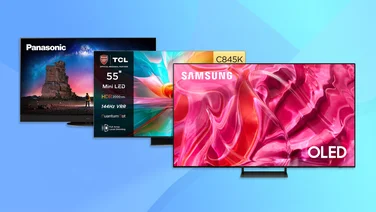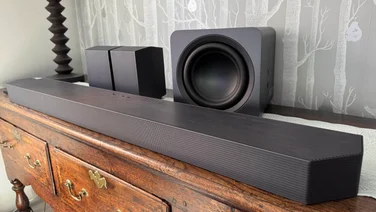To help us provide you with free impartial advice, we may earn a commission if you buy through links on our site. Learn more

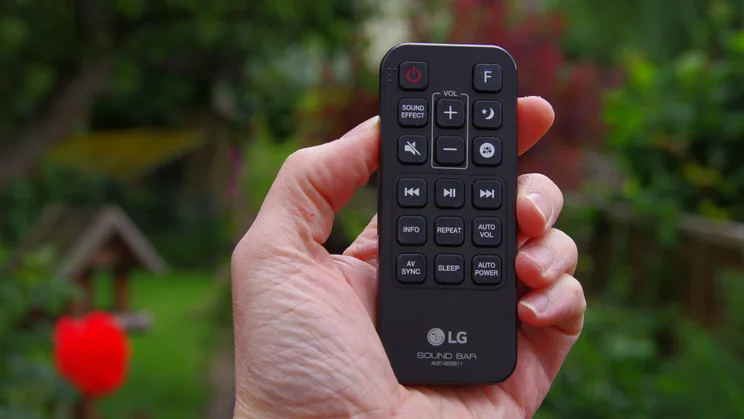

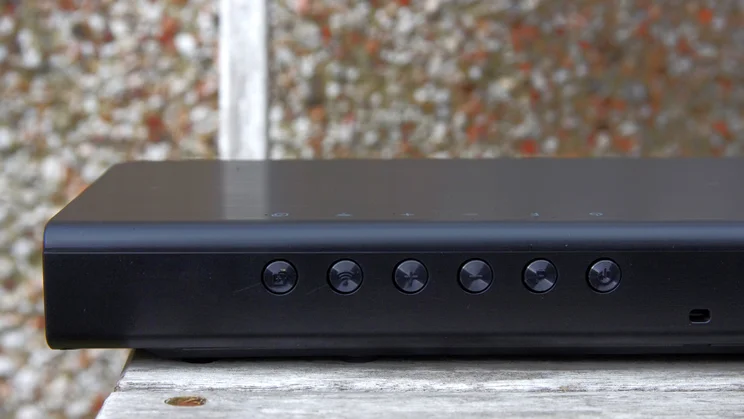


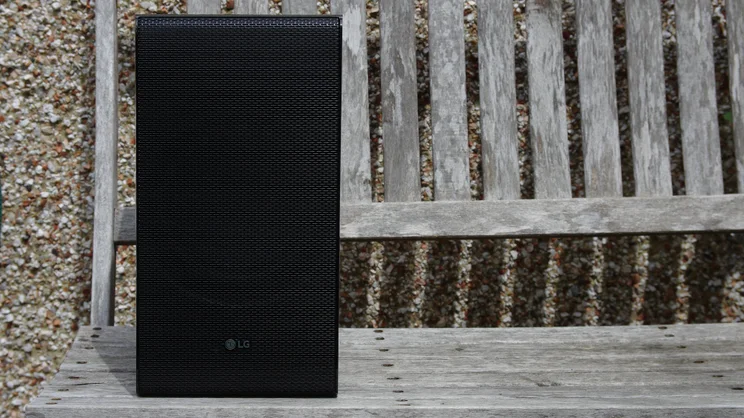
- Big sound
- Ultra-slim, discreet design
- Powerful sound, plenty of volume
- Overblown bass
- Only one HDMI input
- No support for Apple AirPlay
The LG SJ8 is one of the most attractive soundbars I’ve ever come across. Not because it’s ostentatious or showy, or because it lights up like a Christmas tree when you switch it on, but because it’s incredibly, implausibly thin.
It stands a mere 38mm tall, so it will fit under most TVs without obscuring the power switch or the infrared receiver. Most importantly, it’s unobtrusive; a sleek soundbar that really does blend into the background.
LG SJ8 review: Tl;dr
For those into minimalism, the LG SJ8 makes a great case for itself. It’s a super-slim 4.1-channel soundbar and it comes with a separate wireless subwoofer but no rear speakers.
With HDMI, digital optical, Bluetooth and Wi-Fi support, including Google Cast, the SJ8 is reasonably well connected, too, and it produces a powerful, if slightly over-bassy sound.







LG SJ8 review: Price and competition
The LG SJ8 costs £500, which is quite a lot to spend on a TV speaker system with no rear speakers, but it’s not alone at this price point. One of our recent favourites is the Samsung MS650, a standalone soundbar costing £475. It’s a formidable soundbar that uses clever distortion-cancelling tech to produce a clean, powerful, forthright bassy sound without the need for a separate subwoofer.
The LG SJ8 also needs to be good enough to beat cheaper standalone soundbars such as the Q Acoustics M3 (£299) and Q Acoustics M4 (£249) to justify the extra spend.
The advantage the LG SJ8 has over these three products is that it comes with a separate wireless subwoofer, which should be capable of reproducing deeper, richer, more controlled bass and more thundering, rumbling sound effects in movies.
Buy the LG SJ8 now from John Lewis
LG SJ8 review: Design and key features
The first thing to be aware of is that the LG SJ8 is wide – very wide – and it will look a little daft sitting in front of TVs any smaller than 55in across the diagonal.
It’s a discreet speaker, though, and despite rather plasticky build quality, it looks pretty smart. The top panel is brushed-metal-effect plastic, and the front is covered with a sturdy grille that wraps around each side, tucking in to reveal a pair of sideways-firing ports, one on each end.







Behind the grille in the centre of the soundbar is a bright, white LED display, and there’s a series of physical buttons located on the rear of the bar to the right-hand side. For the most part, though, you’ll be using the small, stubby infrared remote-control unit supplied in the box, which is comfortable to use and sensibly laid out.
Physical connections are on the rear in a small cutout and run to a pair of HDMI 2 (HDCP 2.2) ports – one for input, one for output – both of which support 4K passthrough. There’s optical S/PDIF input as well, but sadly no 3.5mm analogue connection.
As for wireless, you can hook up to the soundbar via Bluetooth for direct playback from your phone, and there’s Wi-Fi as well. Support for Google Cast allows you to play music from Google Music, Spotify and Cast-enabled apps, although there’s no support for Apple AirPlay. LG’s Music Flow app is on hand to handle music playback from connected servers and local storage.







LG SJ8 review: Sound quality
It might be slim, but with a total of 300W of amplification – 130W reserved for the bar and 170W driving the subwoofer – there’s plenty of power on offer to fill even the largest of living rooms.
And, in general, the soundbar produces a pleasingly crisp, broad and detailed sound, underpinned by oodles of bass from the wireless subwoofer.
There are a number of modes you can select, depending on your listening preferences, from Standard through Cinema to Bass Blast, and a special adaptive mode called ASC (adaptive sound control) that analyses the audio signal passing through the soundbar and adjusts the EQ automatically. For late-night movie watching, there’s a Night mode that reduces the bass but doesn’t kill it entirely.
For the most part, however, I found that Standard delivered the best balance between bass control and listenability. The Cinema mode delivers a more dynamic sound, but the bass is just too much and tweaking the subwoofer and EQ levels with remote control doesn’t help much.







In fact, even with Standard mode, I found the LG SJ8 to be a little overblown at the low-end. Although there’s plenty of power on show here, it’s this part of the audio spectrum that tends to dominate.
Once again, the bass and subwoofer output levels can be tweaked via the remote control but this doesn’t fix the problems the subwoofer has with control; it simply reduces the level of the bass, which results in a rather thin overall sound.
It’s a shame because, as I said, for the most part the LG SJ8 is great to listen to. As long as there aren’t too many boomy sound effects or explosions surrounding the dialogue, voices are delivered clearly and with a real texture and presence.
It’s good to listen to music on, too, but I did find that some tracks exposed an odd weakness in the mid-bass region: play Kraftwerk’s “The Robots” and when the first fast, repetitive beats kick in, they have a strange tubby sound to them. And while the SJ8 does deliver bass-heavy tracks such as Trentemoeller’s “Moan” with muscle and power, there’s always a touch of flab at the bottom end that is hard not to dislike.
LG SJ8 review: Verdict
The big question is that, with such stiff competition from Samsung’s MS650 at precisely this price, does the LG SJ8 do enough? I’d argue not. Although it’s sleek, slim and attractive, and the Google Cast facility does work well, its flawed sonic performance, particularly in the bass region, undermines its appeal.



